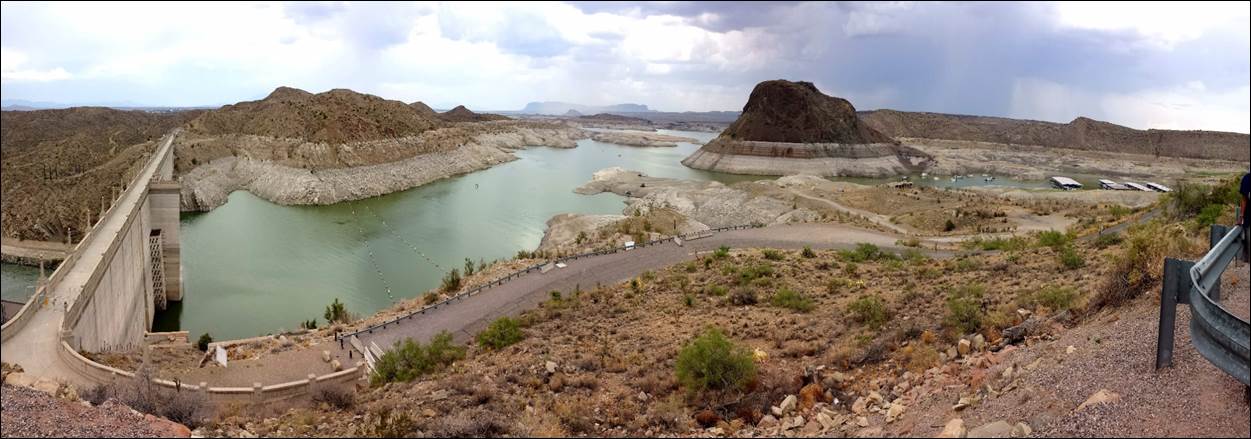NMSU researchers, EBID develop metrics for water-resource management, sustainability

Researchers from New Mexico State University, working in collaboration with the Elephant Butte Irrigation District, have determined that groundwater resilience can be quantified on a
The research is a joint effort by Kenneth “K.C.” Carroll, an associate professor
This summer, Carroll, King
The research team began its work by looking at the multiyear drought that began in the early 2000s and extended drastically into the 2010s.
Currently, the drought is slowly easing up, according to the researchers, and there is
“One of the things we focused on is the irrigation and groundwater system in the Hatch area within the EBID. Hatch is centrally located in the Rincon Valley watershed, which features a small, geologically constrained and shallow groundwater system, but the Hatch population is also small and imports groundwater from the neighboring Nutt-Hockett basin,” Fuchs said.
According to the researchers, more and more farmers are pumping groundwater in the Southwest. The use of both surface water and groundwater is critical to agriculture in the EBID and the Hatch area, and virtually all river-connected irrigation projects throughout the world.
“We wanted to look at quantifying impacts of using both surface water and groundwater,” Fuchs said, adding, “We wanted to look at the ability of the groundwater system, which we consider to be particularly vulnerable to drought given its limited groundwater resources, to rebound from a stress during the longer-term prolonged droughts, and we wanted to develop some of the metrics for groundwater resilience.”
Fuchs also explained that he and the researchers looked at shallow aquifer storage changes in the groundwater system because the surface water and
“Surface water has a residence time that is short, and we are dependent on surface water that mainly originates mostly as annual snowpack and spring snowmelt. The groundwater residence time is typically much longer, and the process of aquifer recharge where we have replenishment of groundwater in storage can take many years, if not decades. So, we looked at shallow groundwater storage changes as a metric for groundwater resilience,” he said.
The research team found a very strong correlation between the annual amount of groundwater extraction for irrigation and the annual availability of surface water.
“When we have more surface water, farmers extract less groundwater, and when we have less surface water, they extract more
The researchers also found that in the Rincon Valley, when there is additional surface water available for release, there is an increase in storage of the shallow alluvium aquifer within the year that the additional surface water is made available, which is attributable to recharge of the shallow alluvium.
When there is a decrease in available surface water, there is a decline in storage in the aquifer within the year the decrease occurs. All recharge and when and how much it
The researchers created a metric to evaluate dependence on groundwater over time as a potential indicator of groundwater stress and, therefore, resilience.
“We developed a metric for water use called the GSRA, which is the groundwater: surface water ratio of application. The basic premise is that when we have more groundwater extraction than surface water diversion over time, we are going to see a decrease in groundwater storage. When we have less groundwater extraction relative to surface water use over time, then we will see
He added, “This metric can be used by farmers on an on-farm basis, water policymakers and water managers alike to make more informed choices about groundwater resilience and sustainability of water in aquifer storage.”


